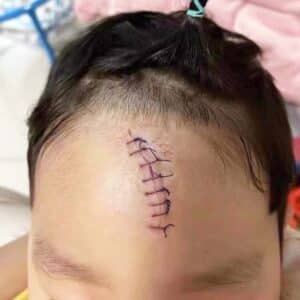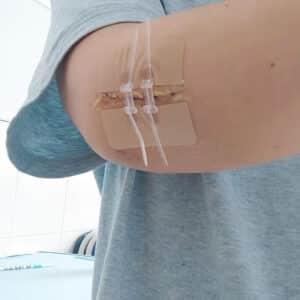- No.277 Shuangshan Road,Deqing,Zhejiang,CHINA
- [email protected]
- WhatsApp+8613065722186
How To Stitch A Wound
If you want to stitch a wound or encounter a wound that requires suturing, follow these steps:
Preparing the environment:
Ensure you are in a clean, well-lit area.
Wash your hands thoroughly and put on sterile gloves.
Preparing the wound:
Clean the wound carefully with a mild saline solution to remove any debris or contaminants.
Gently pat the wound dry with a sterile gauze pad.
Anesthesia (if required):
Depending on the wound’s location and severity, local anesthesia may be necessary to numb the area. This will help reduce pain during suturing.
Choosing the appropriate suture material:
Sutures come in various materials, such as nylon, silk, or absorbable materials like Vicryl. The choice of suture material depends on the wound type and location.
Conventional Way To Stitch A Wound

Placing the sutures:
Use sterile instruments to hold the wound edges together.
Starting at one end of the wound, insert the needle through one side of the wound, making sure to go deep enough to secure the tissue layers.
Bring the needle through the other side of the wound, making sure to create an even stitch that holds the wound edges together without putting too much tension.
Continue to place sutures at appropriate intervals along the wound until it is adequately closed.
Securing the sutures:
Tie the ends of the sutures together using appropriate knots, ensuring the wound remains closed securely.
Trim any excess suture material, leaving enough length for easy removal later.
Dressing and care:
Apply an antibiotic ointment and cover the sutures with a sterile dressing to protect the wound.
Provide instructions for wound care and any necessary follow-up appointments for suture removal.
Sitch A Wound?Longmed ZipStitch Wound Closure Device Make it Easier

Longmed ZipStitch Wound Closure Device consists of medical adhesive tape, one and two pair of polypropylene hasp and liner. The tape is a porous nonwoven backing coated with a pressure-sensitive hypoallergenic adhesive. The main body of the device is the polypropylene hasps that are designed to allow for a non-invasive closure of a wound without stitches and to encourage a tight closure of the wound for an early healing.The non invasive technique reduces tissue trauma and improve patient comfort, and possibly causing less scarring after healing.
It's more easier to stitch a wound by Longmed Wound Closure Device and it only takes 8 steps to apply as below.

